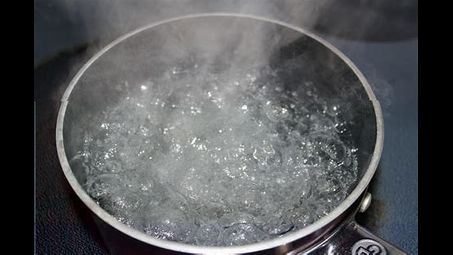When water changes from liquid to gas is the temperature decreasing or increasing?
It is increasing in temperature. When you put a pot of water over a lit stove, it evaporates into its gas form, water vapor, which can also be called steam.

What else can I help you with?
What are the major causes of changes to phases of matter?
Changes in phases of matter are primarily caused by variations in temperature and pressure. Increasing temperature can cause a substance to change from a solid to a liquid (melting) and from a liquid to a gas (evaporation). Conversely, decreasing temperature can cause a substance to change from a gas to a liquid (condensation) and from a liquid to a solid (freezing). Changes in pressure can also impact the phases of matter, such as in the case of sublimation (transition from solid to gas) and deposition (transition from gas to solid).
Freezing from liquid to solid is called?
Freezing is the process by which a liquid changes into a solid by decreasing its temperature below its freezing point.
A gas can be liquefied by?
increasing pressure and decreasing temperature, following the principles of the gas laws. By reducing the volume and cooling the gas, it will condense into a liquid state.
The blank temperature at which solid changes to liquid?
The blank temperature at which solid changes to liquid is the melting point. This is the temperature at which a substance transitions from a solid to a liquid state.
What happens to the thermal energy of a substance during a physical change of state?
it will increase or decrease depending on the states. from solid --> liquid or liquid --> gas it is positive and endothermic, and thermal energy is increasing from liquid --> solid or gas --> liquid it is negative and exothermic, and thermal energy is decreasing
What changes will decrease the total amount of gaseous solute able to be dissolved in a liter of liquid water?
Decreasing the temperature and increasing the pressure will decrease the total amount of gaseous solute able to be dissolved in a liter of liquid water. Conversely, increasing the temperature and decreasing the pressure will increase the amount of gaseous solute that can be dissolved.
What do you have to do to increase the solubility of a gas in a liquid?
Increasing the pressure and decreasing the temperature the solubility increase.
What are two methods for increasing the dissolving rates of gases in liquids?
increasing the area of contact between the gas and liquid (without shaking it) decreasing the temperature of the system
What is the most common way matter changes state?
By Heating up, or Cooling down. If a solid heats up enough it turns to liquid. If a liquid heats up, it turns to gas. If a gas cools down, it becomes a liquid. If a liquid Freezes it becomes a solid
What are the major causes of changes to phases of matter?
Changes in phases of matter are primarily caused by variations in temperature and pressure. Increasing temperature can cause a substance to change from a solid to a liquid (melting) and from a liquid to a gas (evaporation). Conversely, decreasing temperature can cause a substance to change from a gas to a liquid (condensation) and from a liquid to a solid (freezing). Changes in pressure can also impact the phases of matter, such as in the case of sublimation (transition from solid to gas) and deposition (transition from gas to solid).
Freezing from liquid to solid is called?
Freezing is the process by which a liquid changes into a solid by decreasing its temperature below its freezing point.
A gas can be liquefied by?
increasing pressure and decreasing temperature, following the principles of the gas laws. By reducing the volume and cooling the gas, it will condense into a liquid state.
What process causes changes of state?
In a word, temperature. A physical change will change the matter's state based on it's temperature. For example, water, H2O. You can increase the temperature to 212oF and it will change state from a liquid to a gas. You can decrease the temperature to 32oF and it will change state from a liquid to a solid. To answer your question, the process of doing so would be increasing or decreasing temperature of matter.
What is te rule that describes the relationship between phase changes and temperature?
Increasing the temperature a solid material become a liquid and further a gas.
What has to happen in order for water to change one state to another?
your mom has to happen
To change or cause to change from liquid to solid state?
Decreasing the temperature a liquid become a solid.
Why does raising the temperature cause liquid to boil?
Decreasing the pressure -APEX
